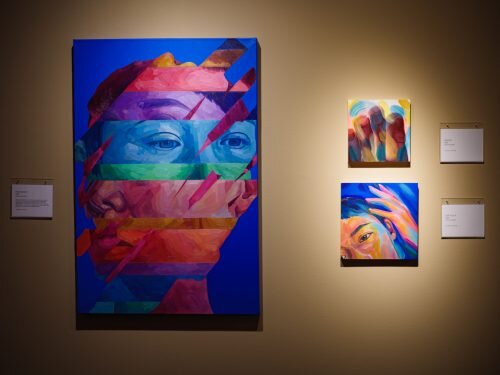
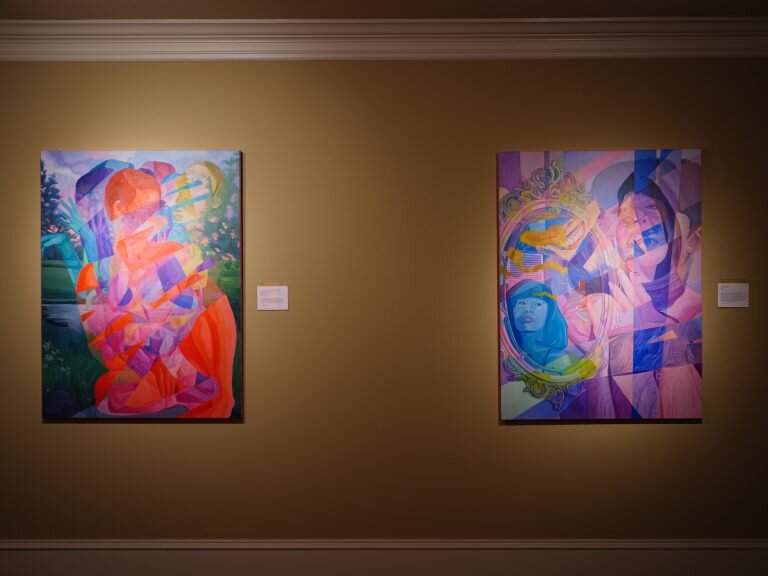
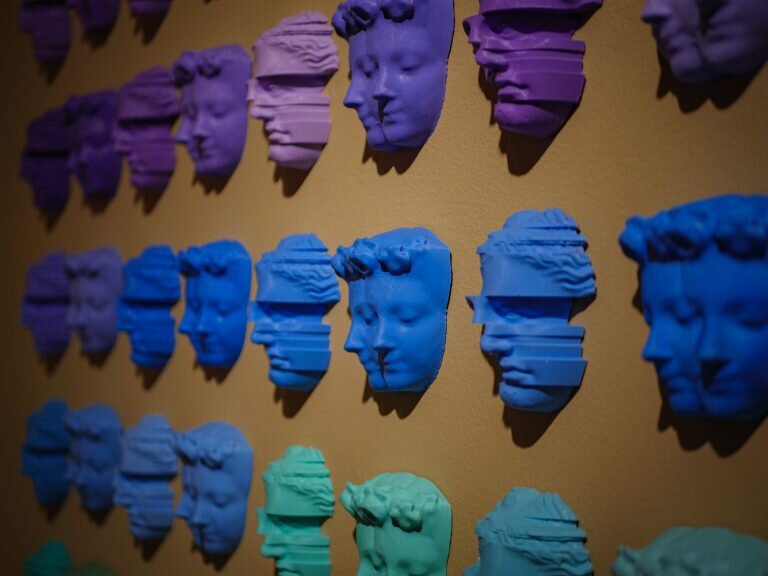
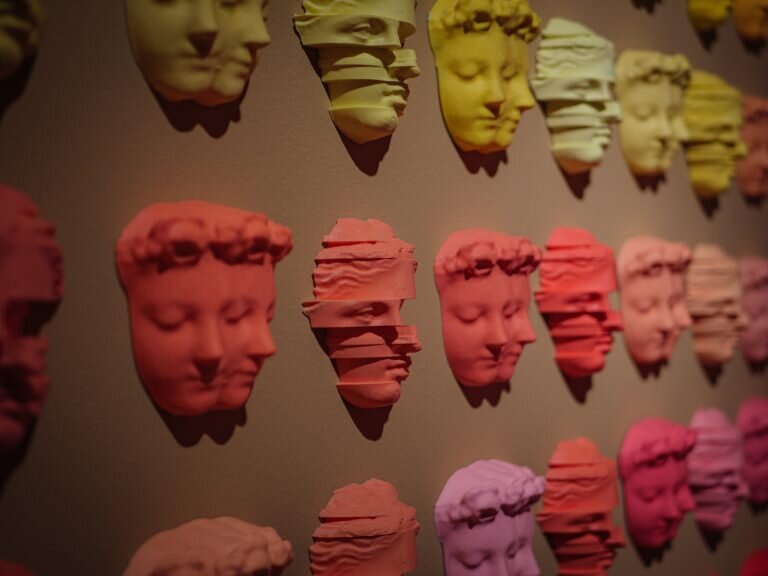
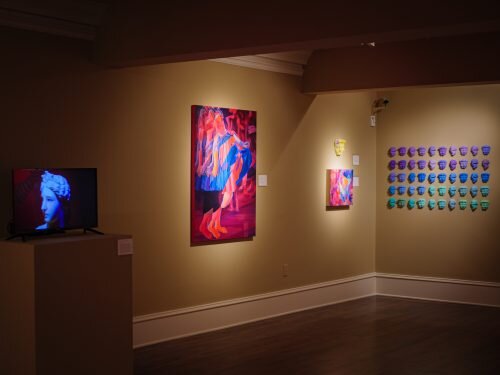
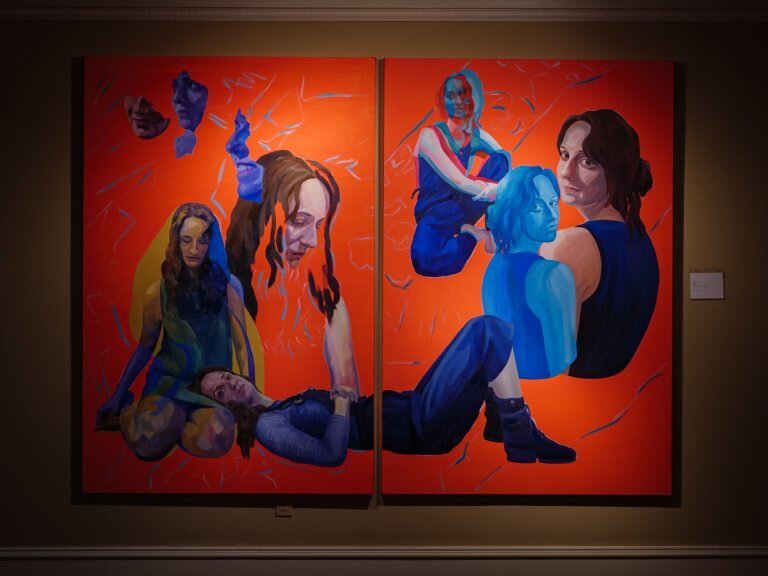
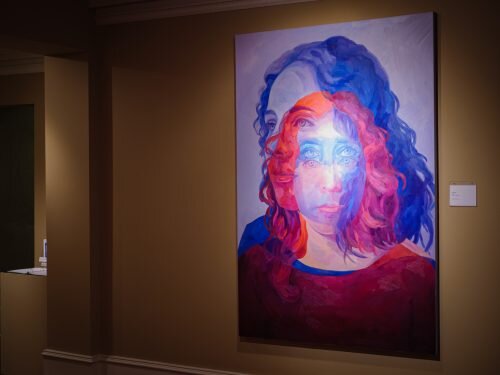
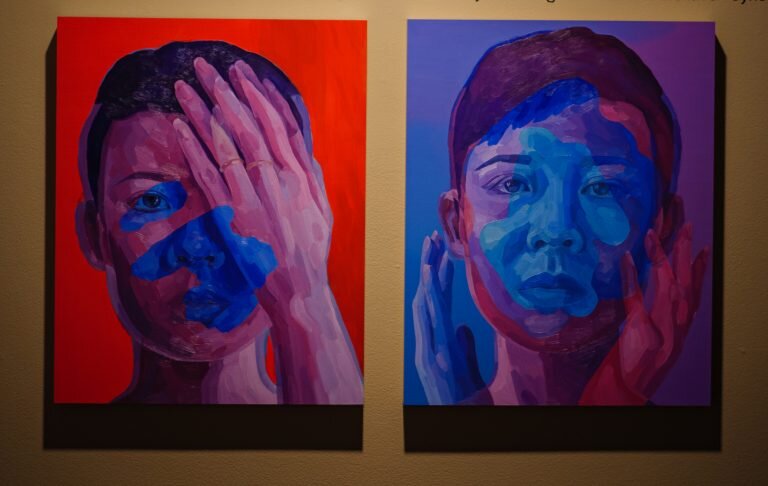


It was a cold afternoon in Marietta, Georgia. The crisp air was magnified by the lack of sunlight due to the multitude of clouds present in the sky. Although gloom was in the atmosphere, the spirits of everyone in attendance for Melissa Huang’s Another Day Another Girl became the perfect dichotomy for what the exhibition itself represented. One’s emotions or personality may be affected by external forces, and whatever feeling, emotion, or action one expresses should not restrict their perception of who they actually are.
Another Day Another Girl is an exploration of the multiplicity of identity. The way that one is perceived by others as opposed to the way that they perceive themselves can vary with the people they encounter, or the situation they may be experiencing. A different version of person exists in the minds of one’s family, friends, colleagues, strangers, and digital audience – none of which encompasses the complete identity. At the Marietta Cobb Museum of Art, Georgia State University MFA candidate, Melissa Huang, uses oil paintings, prints, sculptures, and video art in order to focus on themes such as personality versus persona, technology, and social media’s effects on the search for the establishment of ‘self’.
Upon entry into the Marietta Cobb Museum of Art’s upper deck, the first pair of paintings visible are two self-portraits of the artist herself. Don’t Look and Split hung side by side; Melissa’s gaze similar in both but giving two entirely different emotions. The first was one of curiosity, even trepidation at times, while the latter gave the feeling of acceptance – either of oneself or another. Her beautiful usage of blue and red hues represented the warmth of acceptance and the coldness of rejection – two opposing emotions expressed by the same individual. The exhibition’s main room housed the majority of Huang’s pieces, and the placement of each work of art gives the viewer a deep sense of introspection. Its openness allows one to fully take in the gravity of each individual piece.
In 2020, Melissa showed interest in moving away from self-portraiture, which resulted in her painting portraits of Mattie and Kylie, both close acquaintances of hers. In consideration of how she could apply the concepts of self-portraiture in other people, she continued replicating the figures on canvas with some interactions of the figures as well as by establishing an ambiguous space. For the portrait of Mattie, whom by personality is very introspective and thoughtful, Melissa wanted to create a painting that showed her inner and outer beauty. The Kylie diptych immediately commands attention, partly due to it being in the direct line of sight of anyone walking into the main gallery; but also due to the bright orange background contrasting with the young woman’s fragmented blue face. “Here I have captured Kylie’s portrait in pieces. I painted her in outfits and poses I felt captured her personality,” Melissa said. “The background is a simple abstracted line drawing of the topography of her favorite state park. I actually think the small blue fragmented face in the portrait best depicts Kylie’s character. Something about her smile and profile painted alone feel true to who she is.”
One of the most intriguing facets of Another Day Another girl is how Melissa Huang utilized digital media in her solo exhibition. The Most Beautiful Women (placed between Kylie and Young and sweet) is perhaps Melissa’s most visually interactive piece. It this particular digital art piece, she uses “deepfake technology,” which is when an artist takes a person in an existing video and replaces their likeness with someone else’s likeness using artificial neural networks and machine learning. Did You Take It Yet and One Month In serve as digital diaries into Huang’s life as both a woman and an artist, especially during quarantine.
For many creatives, the COVID-19 pandemic brought about an unexpected change regarding their process. Some say that it signaled a unique surge of inspiration; while others experienced a block in creativity – for Melissa, it was the latter. During the months when artists were most affected by quarantine, Huang started experimenting with data moshing images. Her husband and frequent collaborator, Drew Tetz, enjoyed a specific sculpture that she glitched; suggesting that it should be transferred into a 3-Dimensional design. It was this meeting of the minds that brought about Venus de la Void; a beautiful installation of resin cast, wall-hanging sculptures that outlined the entrance into the gallery’s second room. What is important about these sculptures are that they are what initially brought Melissa out of her creative block. “During this pandemic, I felt like I was going really stir crazy; so starting the collaborative project with Drew was a good way for me to kick start the creative process again,” stated Huang. “For this installation in particular, we wanted to do something larger scale, and this seemed like a great opportunity to do so. We also worked with another friend who is a master at mold-making, and she set us on the right path and helped us make molds of these 3-D printed models.”
The exhibition’s second room contained some of Melissa Huang’s most provocative works. Headspace was an exploration of the ideas surrounding the act of looking, self-objectification, identity, and bad faith; all of which have nuanced Huang’s artistic practice. With one’s digital presence being so important in this day and age, the way people present themselves online and on social media in some instances has become more important than the physical representation. Throughout this process, Huang stated “I found myself questioning the ways in which my digital image is constructed and shared with the world, and further asking how I can disrupt that healthy pattern.” Hold Me Touch Me and 2019’s Another Day Another Girl exhibited the various personalities of Huang – both in self-perception as well as the way others may see her – a perfect embodiment of Another Day Another Girl as a whole.
